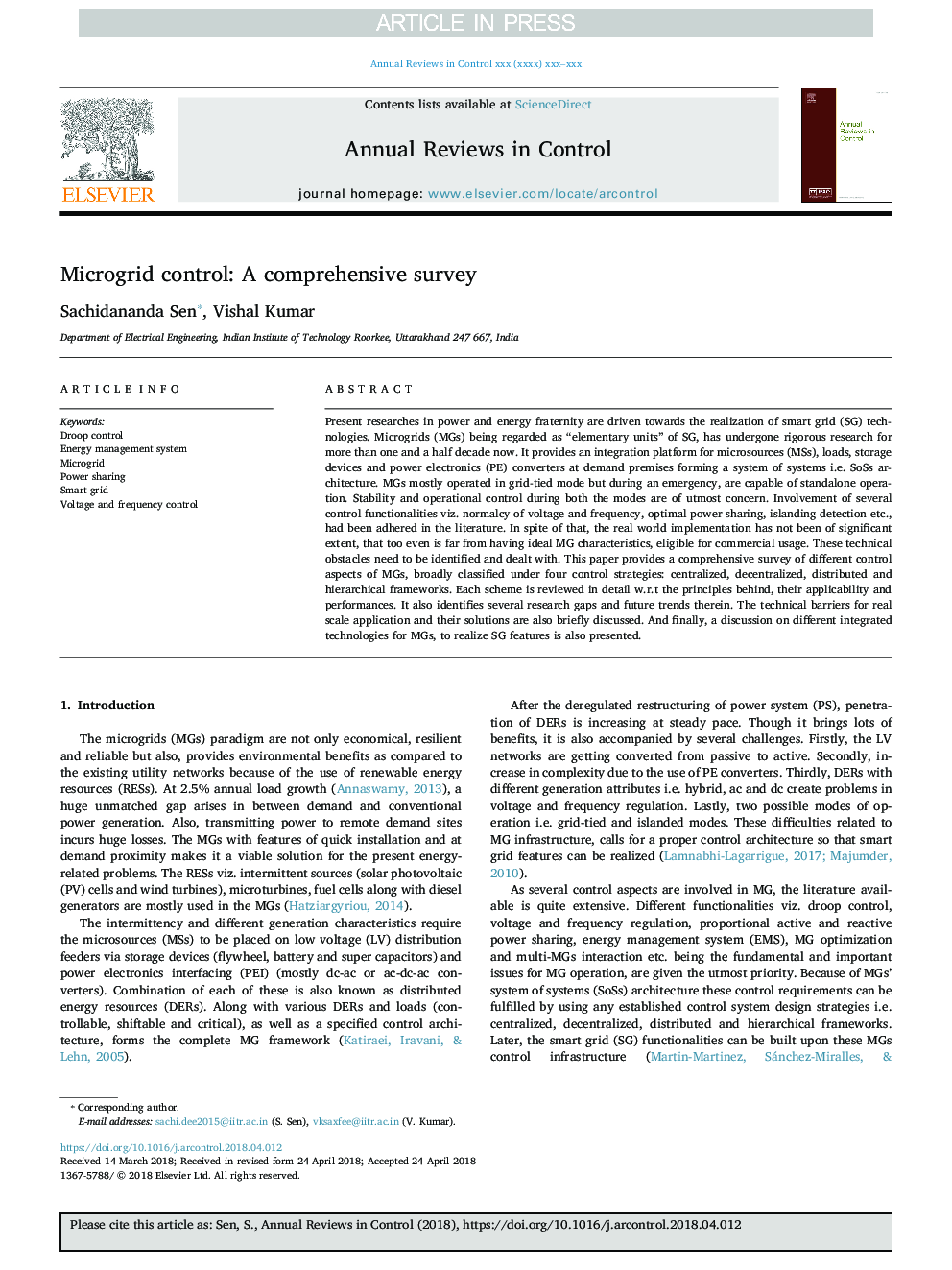| Article ID | Journal | Published Year | Pages | File Type |
|---|---|---|---|---|
| 7107693 | Annual Reviews in Control | 2018 | 34 Pages |
Abstract
Present researches in power and energy fraternity are driven towards the realization of smart grid (SG) technologies. Microgrids (MGs) being regarded as “elementary units” of SG, has undergone rigorous research for more than one and a half decade now. It provides an integration platform for microsources (MSs), loads, storage devices and power electronics (PE) converters at demand premises forming a system of systems i.e. SoSs architecture. MGs mostly operated in grid-tied mode but during an emergency, are capable of standalone operation. Stability and operational control during both the modes are of utmost concern. Involvement of several control functionalities viz. normalcy of voltage and frequency, optimal power sharing, islanding detection etc., had been adhered in the literature. In spite of that, the real world implementation has not been of significant extent, that too even is far from having ideal MG characteristics, eligible for commercial usage. These technical obstacles need to be identified and dealt with. This paper provides a comprehensive survey of different control aspects of MGs, broadly classified under four control strategies: centralized, decentralized, distributed and hierarchical frameworks. Each scheme is reviewed in detail w.r.t the principles behind, their applicability and performances. It also identifies several research gaps and future trends therein. The technical barriers for real scale application and their solutions are also briefly discussed. And finally, a discussion on different integrated technologies for MGs, to realize SG features is also presented.
Related Topics
Physical Sciences and Engineering
Engineering
Control and Systems Engineering
Authors
Sachidananda Sen, Vishal Kumar,
